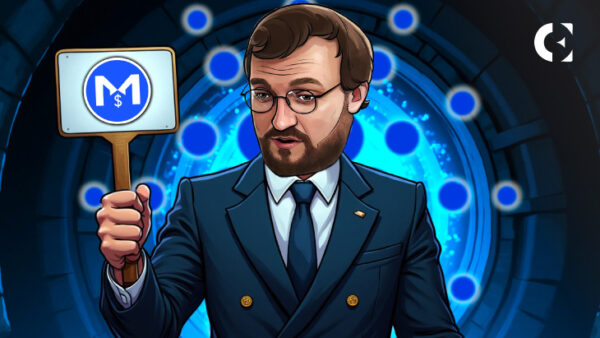- Charles Hoskinson plans to airdrop to 37 million users across eight blockchains.
- The airdrop excludes venture capitalists and insiders, focusing on retail users.
- The initiative promotes privacy, fairness, and cross-chain interoperability.
Cardano co-founder Charles Hoskinson has unveiled what he calls the “biggest airdrop ever,” which will distribute tokens to 37 million blockchain addresses. He reiterated the announcement during his appearance at Consensus 2025 in Toronto and further detailed it at Paris Blockchain Week 2025.
This airdrop, named the Glacier Drop, is designed to mark the launch of Midnight, Cardano’s upcoming privacy-focused sidechain. Two distinct native tokens will be distributed through this event: NIGHT, which will serve as a governance token, and DUST, a token to be used for shielded, private transactions on the Midnight network.
Glacier Drop: A Retail-Focused Airdrop Shunning VC Influence
What sets this airdrop apart is its exclusion of venture capitalists and early insiders. Unlike traditional token launches, which often prioritize institutional investors, Hoskinson’s plan allocates tokens solely to retail users.
Related: Cardano’s Push for Privacy and Precision Gains Momentum with Brave and Masumi Milestones
“This is a stand against the VC Ponzi dynamics,” Hoskinson said. He emphasized that recipients can hold, sell, or discard the tokens without restrictions.
Cross-Chain Airdrop to Reach Users on Bitcoin, Ethereum, XRP, and More
The airdrop will span eight blockchains: Cardano, Bitcoin, Ethereum, XRP Ledger, Solana, Avalanche, BNB Chain, and BAT.
Holders of assets on these networks, including XRP holders, will be eligible. This move further confirms the evolved relationship between the XRP and Cardano communities. Ripple even featured Cardano in a recent promotional video, signaling a shift toward blockchain unity.
Privacy and Usability at the Core of Midnight
Midnight introduces a new concept known as chain abstraction. This allows users to interact with the platform using their existing assets, such as BTC, ETH, ADA, or XRP, without converting tokens.
Developers building on Midnight can pay fees using their chain’s native token. For example, Ethereum developers can use ETH, while Solana developers can use SOL.
The project also supports multi-chain validator participation, enabling node operators from any supported blockchain to help secure the network and earn rewards.
Hoskinson views this as a crucial step toward ending crypto tribalism and fostering collaboration. “Every year at Consensus, someone is shouting, ‘My chain is better than yours,’” he said. “This is about changing that mentality. It’s about building bridges, not walls.”
Related: Hoskinson Promises “Overdue” Cardano Deals After Brave Partnership Shakes Market
Notably, Midnight’s mainnet will go live by late 2025. Hoskinson sees Midnight as crypto’s fourth generation, which prioritizes privacy. Earlier generations focused on decentralization, smart contracts, and interoperability. Now, the focus shifts to secure and compliant data handling.
Overall, Charles Hoskinson believes the Glacier Drop will not only mark a significant launch for Cardano’s Midnight, but will also encourage broader collaboration across diverse blockchain ecosystems, helping to move the entire crypto industry beyond historical rivalries.
Disclaimer: The information presented in this article is for informational and educational purposes only. The article does not constitute financial advice or advice of any kind. Coin Edition is not responsible for any losses incurred as a result of the utilization of content, products, or services mentioned. Readers are advised to exercise caution before taking any action related to the company.










